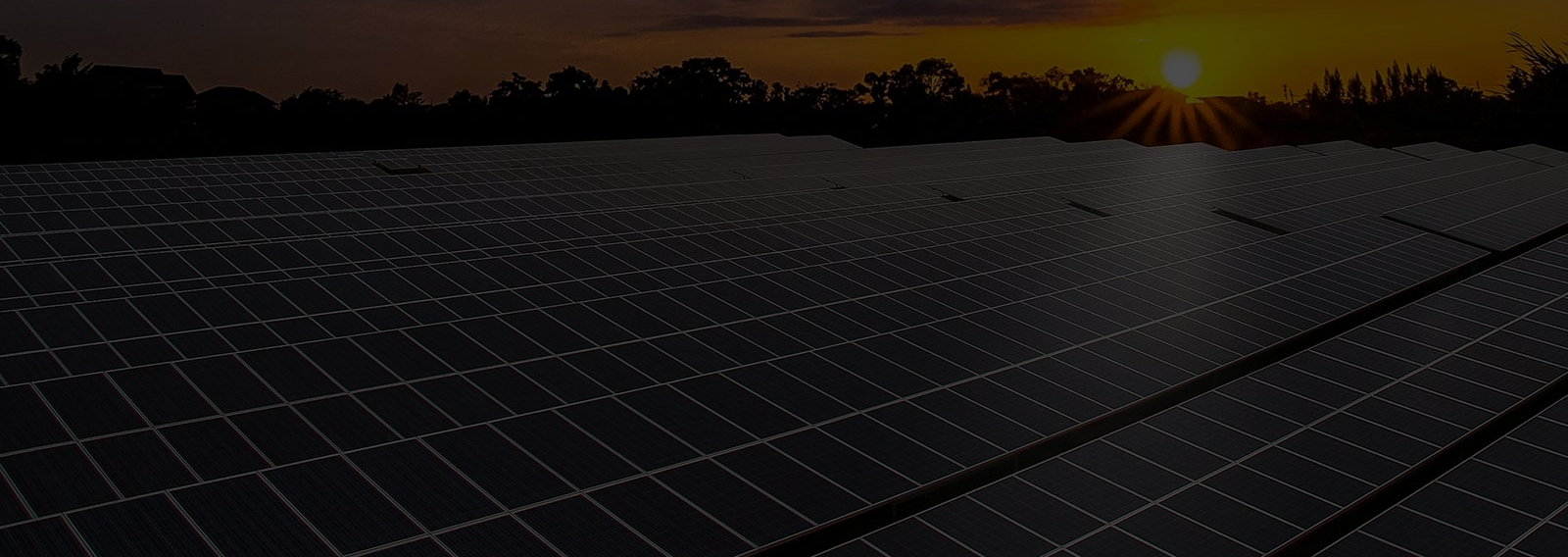Many residential homeowners, businesses and non-profits use solar because they want to minimize environmental issues like climate change and health problems related to carbon emissions. According to the U.S. Environmental Protection Agency, the average household emits approximately 20 metric tons of carbon pollution each year. When a typical two-person household installs a solar power system, that household reduces their carbon emissions by three to four tons annually.
The U.S. Green Building Council reports that buildings contribute 39 percent of all carbon emissions in the United States yet adding solar helps to decrease these effects. While every home, business or non-profit that adopts solar power makes a significant decrease in our pollution levels, the cumulative effect of property owners adopting solar across the country is what really makes a lasting impact.
How does solar reduce greenhouse gas emissions? The electricity that solar panels produce is completely emissions free. By using renewable solar energy to meet your energy needs, you reduce the demand for electricity from your utility. As a result, your utility plant emits less carbon when producing the power needed to meet its customer’s demands. Depending onthe resources that your utility uses to produce energy
— many are still reliant on fossil fuels like coal—the impact of your decision to go solar could be substantial.

Save the Planet
Solar energy delivers environmental benefits

Health & Environmental Benefits of Solar Energy
Homeowners are choosing solar energy at a faster rate than ever before in the United States. The explosive growth of solar power can be attributed to the falling cost of solar panels as well as Rebates and incentives. Homeowners can also improve their health and protect the environment by reducing their reliance on fossil fuels and installing a solar energy system at their home or business.
What to know about solar health/environmental benefits
- Solar energy is a clean, renewable resource which can be used in place of fossil fuels
- Solar decreases harmful emissions into the atmosphere
The environmental benefit of solar energy
Solar energy creates a clean, renewable power from the sun that benefits the environment. Alternatives to fossil fuels reduce carbon footprint at home and abroad, reducing greenhouse gases around the globe. Solar is known to have a positive affect on the environment.
Fossil fuels like coal and natural gas generate most of the electricity in the U.S. Extracting and using fossil fuels is expensive and harmful to the environment. However, solar energy is free and readily abundant – if we could capture all of the sun’s energy shining on the Earth for just one hour, we could power the entire world for one year!
By investing in solar energy, you can help reduce our reliance on fossil fuels and switch to one of the most abundant, consistent sources of energy we have available: our sun.
Solar energy decreases greenhouse gas emissions
By generating electricity with solar power instead of fossil fuels, we can dramatically reduce greenhouse gas emissions, particularly carbon dioxide (CO2). Greenhouse gases, which are produced when fossil fuels are burned, contribute to rising global temperatures and climate change. Climate change contributes to serious environmental and public health issues in the Northeast, including extreme weather events, rising sea levels, and ecosystem changes.
Those who choose to go solar, educe demand for fossil fuels, limit greenhouse gas emissions, and shrink their carbon footprint. Just one home installing a solar energy system can have a measurable effect on the environment. According to the U.S. Energy Information Administration, the average home with solar panels in Connecticut uses 8,288 kilowatt-hours (kWh) of electricity per year. Switching from fossil fuels to solar power in the state has the same emissions reduction effect as planting around 150 trees every year.
In New York, the average home used 7,248 kWh of electricity annually. Choosing a clean source of electricity like solar panels can eliminate the same amount of carbon emissions that are emitted from burning over 5,000 pounds of coal each year.
Solar energy reduces respiratory and cardio health issues
Having fewer air pollutants is one of the biggest benefits of solar energy. An analysis by the National Renewable Energy Laboratory (NREL) found that widespread solar adoption would significantly reduce nitrous oxides, sulfur dioxide, and particulate matter emissions, all of which can cause health problems. NREL found that solar power also results in fewer cases of chronic bronchitis, respiratory and cardiovascular problems, and lost workdays related to health issues.
The benefits of solar energy are clear. Not only can you save money on your electric bills – you can also reduce your carbon footprint and improve the health of those around you.
What Are the Environmental Benefits of Solar Energy?
There are significant financial and practical benefits to installing a solar energy panel — with a one-time purchase, solar panels can cover as much as 100% of your electric usage depending on the amount of roof space available, solar access and other factors. For many businesses and homeowners, this is a no-brainer. However, if you’re on the fence about whether to get a solar panel or wondering if it’s really worth the time, effort and investment, you may want to consider the other benefits of solar energy, as well.
Not only is solar energy an incredibly beneficial financial decision for your home or business, but it also contributes to the wellness of the environment and even to public health as a whole! The differences between solar and traditional energy versus the drawbacks of traditional fossil fuels and why solar panels are better for the environment are covered below.
Traditional Energy vs. Solar Energy
Approximately 67 percent of the electricity generated in the United States comes from fossil fuels — 33 percent from coal, 33 percent from natural gas and another one percent from petroleum oil. Traditional energy sources can be used to produce electricity when they are burned. However, that process produces a substantial amount of greenhouse gasses. When these gasses get released into the atmosphere, they pollute the air and trap heat within the earth’s atmosphere. The most prominent of these gasses is carbon dioxide.

Between manufacturing, installation, operation, maintenance and dismantling, natural gas emits between 0.6 and two pounds of carbon dioxide equivalent per kilowatt-hour, and coal emits between 1.4 and 3.6 pounds per kilowatt-hour. These gasses build up in the atmosphere and cause serious harm to the environment and public health.
By contrast, solar energy uses light collected from the sun to produce electricity. The process typically involves sunlight hitting a solar panel, where the photons of light are converted into electrons, creating electricity. This electricity can then be converted into a useable form within the building, at which point it can be immediately used. This process is quick, direct and produces little to no carbon emissions. Between manufacturing, installation, operation, maintenance and dismantling, solar energy produces a total of 0.07 to 0.2 pounds of carbon dioxide equivalent per kilowatt-hour, this is a fraction of the amount produced by fossil fuels.
Traditional Energy Source Drawbacks
Traditional energy sources have served the United States for decades however, the public has become more aware of the environmental and public health problems associated with this energy. The byproducts of the fossil fuel burning process, known more generally as “greenhouse gasses” are at the center of environmental pollution. In fact, several countries are pursuing alternative energy production methods in an effort to reduce their greenhouse gas production.
Some of the negative aspects of fossil fuel-based energy include the following:
Harmful extraction process
Harmful extraction process: Extraction of fossil fuels from the earth can be devastating for the local environment. Strip mining, drilling and fracking can all have negative impacts on the surrounding environment. Strip mining leaves ecosystems more vulnerable to catastrophic flooding, while drilling can unearth toxic minerals, contaminating groundwater.
Fracking for natural gas releases toxic chemicals and minerals into the surrounding area, and can destabilize the fracking area, potentially causing seismic events. Coal mining can also produce toxins like mercury, lead and arsenic, which can do serious harm to workers and local ecosystems if improperly handled.
In addition to these extraction processes, searching for oil can have its own negative effects. Seismic techniques for searching for oil under the ocean floor can do serious harm to fish and marine life, as can exploratory drilling.
These extraction processes can also lead to serious oil spills, which can devastate the surrounding ecosystem. This is best exemplified by the 2010 BP Deepwater Horizon oil spill in the Gulf of Mexico, an event which still has an effect on the ecosystems of the Gulf and the Louisiana coastline to this day.
Dangerous transportation methods

Dangerous transportation methods: Transporting oil across long distances usually involves ocean tankers or land pipelines, which are both prone to accidents. Errors during travel or failures in maintenance can result in spills or leaks. These can result in catastrophic effects on local environments. These effects are amplified in coastal regions and freshwater environments, where the organisms are more sensitive to changes in the surrounding ecosystem.
Water usage and pollution
Water usage and pollution: Water is a resource negatively affected by nearly every stage of the traditional energy production process. This vital resource is used in numerous ways through the traditional electrical production process and is an important part of coal and petroleum processing.
Most traditional power plants use water-cooling systems, and water is used in several aspects throughout the fossil fuel production process, including drilling, refining and transporting. This water usage accounts for a huge amount of United States’ freshwater withdrawals (41 percent of all annual withdrawals), followed by irrigation and drinking water at 37 and 13 percent, respectively.
The first problem with this enormous water usage is the competition it poses with both local ecosystems and other economies. Water usage by energy plants is a major challenge during times of drought or water stress, as many of these plants can’t simply reduce their water intake — and residential areas require energy to continue functioning. This introduces increased stress among both residential locations and agricultural businesses, as both require water to function properly.
However, this massive water usage also stresses local ecosystems to the breaking point. Water reduction can destroy aquatic habitats for fish and insect larvae and can lead to animals dying of thirst.
This large usage also negatively affects water quality. If water is pumped back into its source, it is usually at a much higher temperature, anywhere up to 18° F hotter than normal. This can severely harm aquatic ecosystems, because many organisms can only live within a narrow range of temperatures. Exceeding either extreme can result in a total extinction of the organism’s population within the habitat in question, which can negatively affect food chains within the entire ecosystem.
The water can also be polluted by toxins from the mining, drilling or refining processes, or can be contaminated by acid rain produced by the greenhouse gasses trapped in the atmosphere.
Greenhouse gas emissions
Greenhouse gas emissions: Electricity generation is by far the largest source of greenhouse gas emissions, accounting for 37 percent of United States carbon dioxide emissions. This is closely followed by transportation and industry, which account for 37 and 15 percent of emissions, respectively. 25 percent of all electricity is produced by coal-fired power plants, which produce the most carbon per kilowatt-hour.
These greenhouse gasses, such as carbon dioxide, are produced when fossil fuels are burned. After production, they are trapped in the atmosphere, accumulating there. These larger particles effectively trap heat within the earth’s atmosphere, causing global temperatures to rise. These greenhouse gasses, therefore, contribute heavily to the climbing global temperatures and to climate change.
These issues, in turn, contribute to serious environmental and public health issues, including extreme weather events, rising sea levels, habitat changes and diseases.
Public health issues

Public health issues: The burning of fossil fuels releases numerous toxic chemicals and molecules into the air, including nitrous oxides, sulfur dioxide and particulate matters, all of which can cause respiratory health problems. Chronic bronchitis, respiratory dysfunctions like asthma, cardiovascular problems and cancers are all serious public health issues, which can result from air pollution. Any of these can negatively affect public health, contributing to lost workdays, reduced life expectancies and increased mortality rates, especially in highly polluted areas.
Within the United States alone, the total economic impact associated with these health issues is estimated to be between $361.7 and $886.5 billion, or between 2.5 and six percent of the United States’ gross domestic product.
The Benefits of Solar Power

In light of these dismal effects of fossil fuels on the environment, many have turned to renewable, cleaner energy production processes such as solar. The environmental impact of solar panels is impressive — a single, 4-kilowatt residential solar power system can be expected to offset nearly 200,000 pounds of carbon dioxide over 25 years. This huge offset is equivalent to planting around 2,316 trees, or avoiding driving 208,166 miles.
Larger systems, like those for apartment complexes or business suites, can expect to offset 178 tons of carbon dioxide over 30 years, or the equivalent of planting 10 football fields full of trees.
Some of the benefits of solar power for the environment include the following:
Renewable energy
Renewable energy: Solar power is most remarkable as a source of unlimited, abundant energy. If it were possible to capture all of the sunlight shining on the Earth for a single hour, there would be enough energy produced to power the entire world for a year! This resource removes nothing from the environment, and requires no complex mining or drilling processes to obtain — all it takes is a few pieces of equipment and an installation team before your building is equipped with its own power source.
Cut carbon emissions
Cut carbon emissions: Buildings, both commercial and residential, produce about 39 percent of all carbon emissions in the United States, with the average household emitting about 20 metric tons of carbon pollution each year. However, solar electricity contributes 96 to 98 percent less greenhouse gasses than coal generated electricity. By installing a solar power system, a typical two-person household can reduce their carbon emissions by three to four tons annually. As more people install solar panels on their homes, demand for fossil fuels across the country will decrease, cutting carbon emissions substantially.
Improve public health:
Improve public health: By helping cut carbon emissions and fossil fuel burning, solar energy helps contribute to the improvement of public health. In areas using significant amounts of solar power and other renewable energy sources, cases of chronic bronchitis, respiratory and cardiovascular problems were significantly reduced, resulting in fewer lost workdays, improved life expectancy and reduced mortality rates.
Reduced water usage
Reduced water usage: Unlike coal or nuclear plants, which may draw 20 to 60 gallons of water for every kilowatt-hour of electricity produced, solar energy requires little to no water to operate. Between manufacturing, installation, implementation and removal, solar energy uses 86 to 89 percent less water than coal-produced electricity. This reduced usage minimizes the amount of water potentially polluted by manufacturing processes.
This is placed in stark contrast to the high number of toxic byproducts leaked into fresh water from the petroleum refining process. By switching to solar, the energy industry would leave more clean water for irrigation and residential use, reducing competition for water, leaving more for the populace and the surrounding ecosystems.
This is placed in stark contrast to the high number of toxic byproducts leaked into fresh water from the petroleum refining process. By switching to solar, the energy industry would leave more clean water for irrigation and residential use, reducing competition for water, leaving more for the populace and the surrounding ecosystems.
Reduced land usage
Reduced land usage: Coal power plants, natural gas plants and petroleum refineries require huge plots of land to handle their massive production lines. Though these large plots may be necessary to maintain their traditional systems, processing sufficient quantities of fossil fuels to power the local population, these plots still take up a large amount of space.
These spaces could instead by used for other buildings, such as businesses or residences. These plants also tend to pollute the surrounding area with gasses and toxic byproducts, negatively affecting the local environment.
Solar electricity, on the other hand, requires less than 20% of the land needed by traditional plants. Solar panels in residential areas tend to be placed on roofs, taking up no extra space, while commercial solar panels tend to take up less space than the average oil refinery.
SectionLong-lasting materials
Long-lasting materials: Solar panels have an exceptionally long lifespan compared to other energy-producing mechanisms, with a warrantied lifespan of around 25 years. Some of the first solar panels from the 1950s are still functioning and producing today! This means a single purchase will last for decades to come.
As of 2015, 13 percent of the United States’ electricity was produced by a renewable energy source. 0.6 percent of the total energy was generated by a solar energy source. As solar panel prices decline and more people invest in solar energy, however, this percentage is slowly on the rise. In combination with other renewable methods, this incredible electricity-producing tool can be used to help reduce greenhouse gas emissions worldwide, building a better future for the planet, its ecosystems and its people.


































